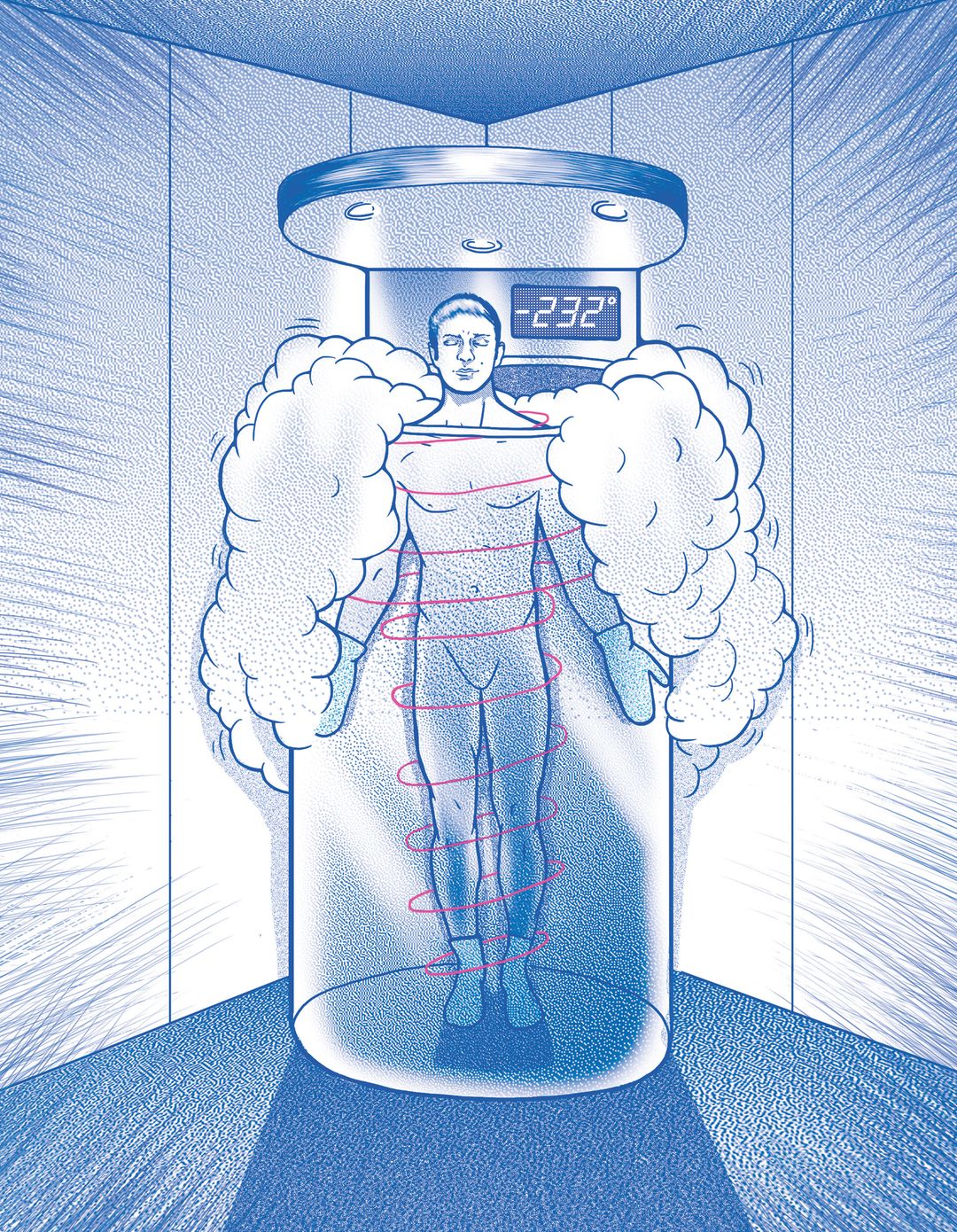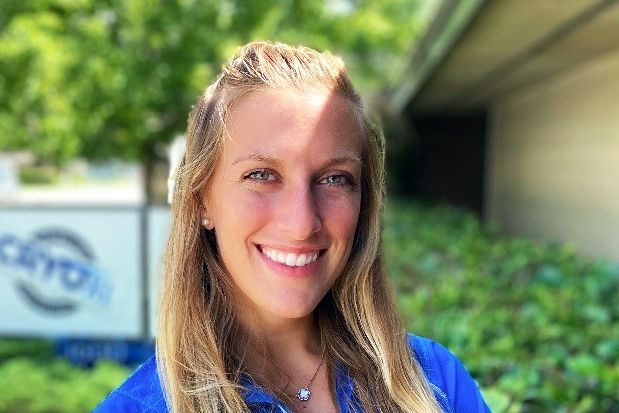We Tried It: Whole-Body Cryotherapy

Image: Cat Sims
The waiting room at Advanced Rejuvenation was like any other doctor’s waiting room—same wrinkled magazine collection, same inoffensive art (here it was whales and dolphins swimming in outer space), same jargon-filled liability waiver that I usually skim and sign. Except that today I read the forms carefully because I had an appointment for a whole-body cryotherapy (WBC) treatment, where I was to be blasted with air so cold that it did not occur naturally anywhere else on earth.
I play with alternative medicines. I drink kombucha, defend acupuncture, evaluate romantic relationships from astrological compatibilities. But this liability and medical release and indemnification agreement read that my participation “may involve risk of serious injury, illness, disability or death” and that I “nevertheless choose voluntarily to request permission to participate.”
I first heard of cryotherapy a few years ago as a cutting-edge secret that top athletes like LeBron James and Cristiano Ronaldo used to prolong their already stellar careers. News sites showed clips of their lean bodies walking out of vapor-filled machines. It all seemed so futuristic and out of reach. But in Sarasota, at least four facilities recently opened to provide WBC services, which, at Advanced Rejuvenation, range from $50 to $75 for a three-minute session.
Like many therapies that take off in popularity, cryotherapy has a laundry list of supposed benefits: It will decrease muscle soreness, reduce inflammation, improve sleep, enhance weight loss, strengthen the immune system, help with anxiety and depression, reverse aging and alleviate symptoms of chronic conditions like autoimmune diseases, osteoporosis and multiple sclerosis. And, like many new medicines outside the Western medical canon, cryotherapy has yet to be accepted by the scientific community or the FDA, which has not approved WBC as a medical treatment. This doesn’t mean that future evidence won’t prove that there are true health benefits—health science isn’t the most reliable of all medical fields—so I was still willing to find out for myself.
A nurse led me into the cryotherapy room to take my blood pressure, and I surveyed the layout. The cryo machine looks like something we predicted future showers would look like back in the 1950s. Three massive nitrogen tanks stood against the wall. A long, red shag carpet covered the floor and another painting of whales floating somewhere in the universe was on the wall. I asked the nurse if there were any safety precautions I should take.
“Just make sure you’re totally dry before you get in. You don’t want to get frostbite,” she said.
I noticed that I was sweating a little. That made me nervous. And because I was nervous I began to sweat more.
Dr. John A. Lieurance arrived. He is a soap-opera handsome chiropractor. He first experimented with cryotherapy when he hurt his back on vacation, paddleboard surfing on the north shore of Honolulu. Lieurance found a cryotherapist in Hawaii and liked the results, so he brought the technology to the offices at Advanced Rejuvenation and started CRYO SRQ.
“How do you deal with cryo-skeptics who dismiss alternative medicine?” I asked.
“Anything besides pain medication and anti-inflammatories they call ‘alternative medicine,’” Lieurance said. “It’s upside down. Pharmaceutical companies have a lot of power.”
I asked him to sell me on WBC.
“We live in a society with technology that allows us to distance ourselves from anything uncomfortable—really hot, really cold. We buffer ourselves from extreme temperatures. But with exposure to cold, our body turns genes on to adapt. Cryotherapy tricks the body into going into a state of shock,” he said. “Those genes are very powerful for living healthier and pain-free lives.”
“If the body has this ability to turn these things on, why doesn’t it provide these abilities already? Why do we have to trick it?” I asked.
“I think it’s our bad habits,” the doctor explained. “The way we sit, walk, drive, our chronic emotional stress—we have these primitive brain reflexes that don’t get exercised because of modern life.”
I fink it odd that we are always seeking ways to “trick” the body like we “trick” an opponent. We treat our bodies as though they are against us, enemies because they make us mortal, so we’ll pay for all kinds of therapies to dupe our fleshy prisons.
Dr. Lieurance showed me to the changing room, where I was to leave on only my underwear and put on mittens and wool booties to protect my hands and feet where my blood circulation is weakest. As I changed, he spun the knobs to the nitrogen tanks and I heard the hiss of compressed gas. He led me to the machine, where the door opened up to a padded cylinder.
“If you feel claustrophobic or uncomfortable, you can step out at any time,” he told me.
The machine turned on and cold air blasted my back side. A thick vapor wrapped around my body and I felt as though I were standing in a witch’s cauldron. It was cold, but no worse than any winter wind I experienced in New York City. The doctor instructed me to turn my body around so that the cold air didn’t focus on just one spot. The temperature dropped to -232 Fahrenheit and the doctor read off the time remaining in 30-second intervals until he said I could step out.
Dr. Lieurance told me that my three-minute WBC session was the equivalent of a 30-minute ice bath. I have taken many ice baths and I did not feel the same immediate euphoria. Perhaps there were some inscrutable health benefits occurring inside me that I was not aware of. My body warmed quickly and I left. The doctor told me I should begin to feel energized.
I decided to spend the day processing and deciding if any benefits of WBC showed up. I thought about the ways new therapies like cryotherapy exist in that liminal space in health science where it’s difficult to know what works and what doesn’t. Results are influenced by placebo effects, biased methodology and powerful pharmaceutical lobbies. I suppose all that matters is if it makes you feel good.
As I pondered the ways health sciences are shrouded in mystery, I realized I had just eaten a doughnut. In 30 minutes I was going to feel like crap—no mystery there.



